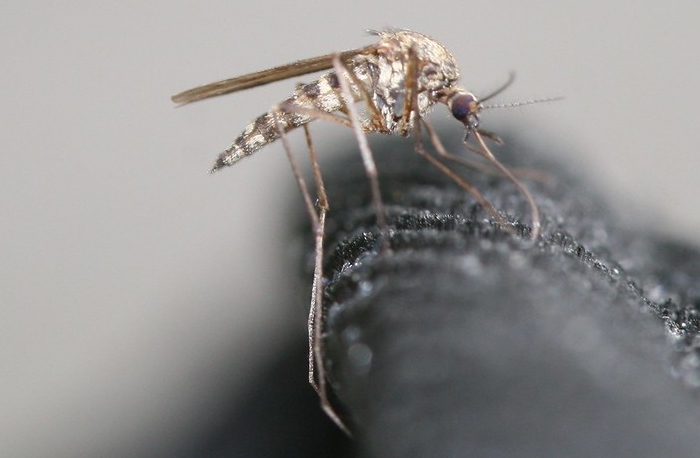Image courtesy of Arthur Chapman via Flickr Creative Commons
Background
What is considered to be the world’s deadliest animal? Is it snakes, or sharks, or even humans? Not even close. According to the Centers for Disease Control and Prevention (CDC), the mosquito is by far the world’s deadliest, responsible for roughly 750,00 human deaths per year [1]. The prevalence of diseases such as malaria, dengue, chikungunya, and Zika has steeply increased over the past decade, with exponential, rapid growth expected to continue [3,4]. The worldwide incidence of dengue alone has increased 30-fold over the past 50 years, and now about 40% of the world’s population lives in endemic regions for dengue [3].
Luckily, three of these diseases—dengue, Zika, and chikungunya, have one culprit to blame: the Aedes mosquito. These mosquitoes, labeled as “opportunistic” and “aggressive” by the World Health Organization (WHO), thrive in built environments and are very tenacious [3]. The females are the only ones that bite, as they require blood to develop their eggs. Their eggs can be laid in any source of still water, which is readily available in human-occupied places. A single female can produce around 500 offspring in her lifetime, making it very easy for mosquito populations to rise exponentially if left unchecked [3,4].
Promising Techniques
Since the early 1940’s, various mosquito control techniques have been developed and implemented with varying success. Through mass insecticide spraying and public education on removal of still-water sites, most mosquito-borne diseases were no longer a major public health threat outside of Africa in the 1960’s [3]. As public interest fell though, so did control techniques. Combined with a lack of suitable infrastructure and a dwindling number of specialists available, the mosquito population has surged. Due to the vast increase in human infrastructure and population density, mosquito control techniques used in the past are no longer effective methods of intervention [3,4].
One of the most promising new techniques being tested right now is the sterilization of male Aedes mosquitoes. The WHO supports a process called the Sterile Insect Technique (STI), which has been used since the 1950’s to control population of insect pests that attack crops and livestock. The technique is simple: a large number of male mosquitoes are sterilized using radiation and are released into a population to mate with females, who then do not produce any offspring [3,4,5]. Tests have shown that this technique can reduce mosquito populations by up to 90 percent, but further research, which is scheduled to begin in 2020, is required to determine if this population reduction translates to a reduced incidence rate of human infections [5].
Another promising technique, the Wolbachia method, is of a biological nature, where male mosquitos are infected with the Wolbachia bacteria, a naturally occurring bacteria found in 60% of insects. When males infected with this bacteria mate with females, the eggs are unable to hatch, therefore suppressing mosquito populations. Field tests have shown that this can reduce the population by up to 65% in one year, but similarly to sterilization, it is unclear how this affects human infections [5].
Environmental Impact
While eradicating the Aedes mosquito might prove beneficial to humans, how will it affect other insects and animals living in the same environment? As insect ecologist Dr. Jittawadee Murphy said, “Wiping out a mosquito species could leave a predator without its prey or a plant without a pollinator” [2]. Entomologists and anthropologist argue that while removing mosquitoes from a population may cause a certain predator to lose a feeding source, there are so many other options to choose from that the mosquito will be hardly missed [2]. Many mosquito species contribute to ecosystems as pollinators or ecological waste removers, however, the Aedes does not do so impactfully. It is believed that if eradication were to occur, the ecosystems in which these mosquitos thrive would only experience a slight disturbance [2].
Eradication of the Aedes mosquito largely will impact the human population, particularly in places like sub-Saharan Africa, where the burden of disease from Aedes mosquito derived diseases is high. Positive impacts could be widespread, including increased total GDP, lower burdens to health systems, and increased research into other priority health issues [2]. As Janet Fang of Nature magazine once said, “The cost of an increased population does not outweigh the benefits of a healthier one [2].”
References
- Center for Disease Control and Prevention. (2019, August 15). Fighting the World’s Deadliest Animal. Retrieved November 19, 2019.
- Fang, J. (2010, July 21). Ecology: A world without mosquitoes. Retrieved November 19, 2019, from https://www.nature.com/articles/466432a.
- World Health Organization. (2016, February 17). Mosquito control: can it stop Zika at source? Retrieved November 19, 2019.
- World Health Organization. (2019, November 14). Mosquito sterilization offers new opportunity to control chikungunya, dengue, and Zika. Retrieved November 19, 2019.
- Zheng, X., Zhang, D., Li, Y. et al. Incompatible and sterile insect techniques combined eliminate mosquitoes. Nature 572, 56–61 (2019) doi:10.1038/s41586-019-1407-9


